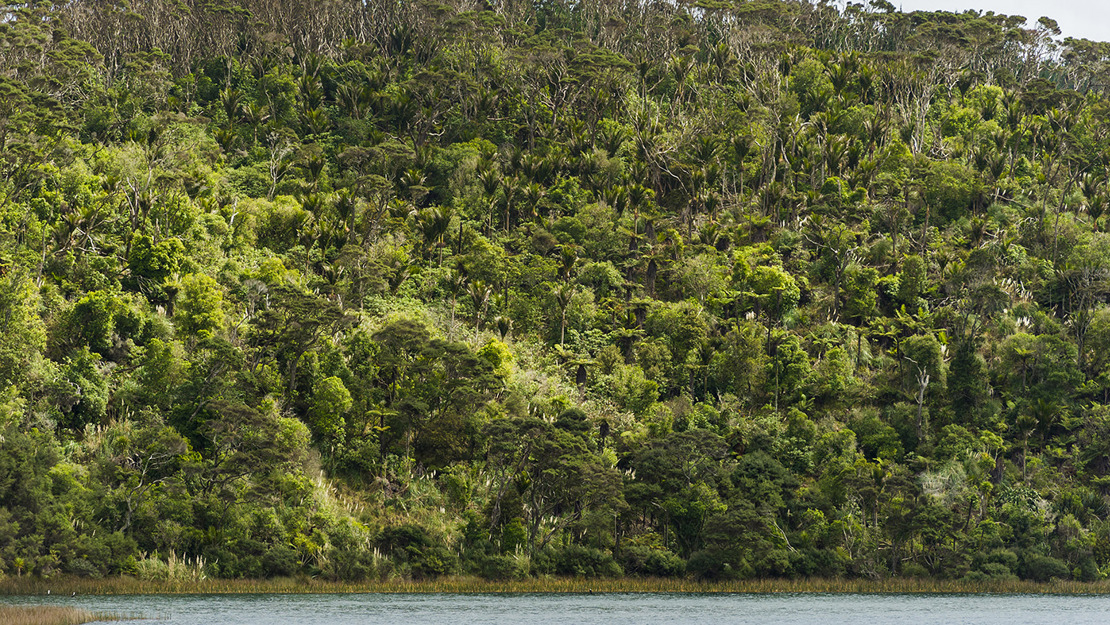Tōtara, kānuka, broadleaved forest (dune forest) ecosystem (WF5)
Warm forest ecosystem
About this ecosystem
This rare ecosystem occurs in warm climates and frost-free areas on stabilised sand dunes. Soils range from recent coastal sands to older sands with a higher clay content.
This ecosystem is critically endangered and few examples of mature forest remain. Most remnants are dominated by kānuka shrubland.
Look for this ecosystem in:
- South Head
- Te Ārai to Pakiri
- Tapora.

Flora and fauna in this ecosystem
Close to the coast and on recently stabilised dunes kanuka and locally, pōhutukawa are the primary colonisers, living close to the coast on stabilised sand dunes. Over time, as the soils develop and become more fertile, tōtara and broadleaved species become more common, including:
- tītoki
- māhoe
- rewarewa
- karaka
- kohekohe.
Common native bush birds live in this forest, including:
- tūī
- piwakawaka (fantail)
- kōtare (kingfisher).
Threats to this ecosystem
This ecosystem is now very rare and threatened. Less than one per cent remain across its entire (national) range. Most of the forest loss was a result of pre-European fires which led to erosion and dune mobility.
Current threats to this ecosystem include:
- pest animals (possums, fallow deer and horses)
- coastal development
- weeds
- edge effects
- land-use activities on neighbouring land (e.g. forestry).



